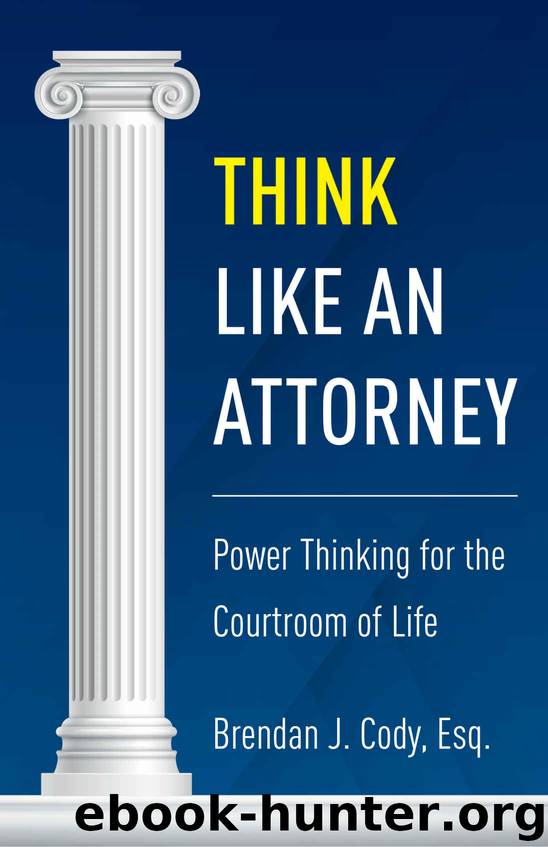Think Like an Attorney: Power Thinking for the Courtroom of Life by Brendan Cody

Author:Brendan Cody
Language: eng
Format: mobi
Publisher: Paralaw Publishing
Published: 2019-09-22T21:00:00+00:00
Hearsay
Hearsay is an additional courtroom concept that is probably the most well-known evidentiary rule. Hearsay is the legal term that describes statements made outside of court not subject to cross examination. Most evidentiary codes defining hearsay adopt verbatim the rule as expressed in the Federal Rules of Evidence. Rule 801 states as follows:
Hearsay means a statement that: 1) the declarant does not make while testifying at the current trial or hearing; and 2) a party offers in evidence to prove the truth of the matter asserted in the statement.
The main thrust of hearsay for our purposes is this: secondhand witnesses are not reliable. Secondhand statements cannot be admitted in court as a matter of fairness. If the author of the secondhand statement is not available in court, the opposing lawyer cannot cross examine that particular person as they are absent. All witnesses are subject to rigorous direct and cross examination. To allow hearsay disrupts this rule. Hearsay is unreliable because by its own definition it cannot be subjected to meaningful cross examination. For instance, a document, even if signed by its creator, cannot itself be cross-examined. That document must be accompanied by its author who can explain various details of the hows and whys as to its origin. Obtaining information straight from the witness first hand is the most reliable method. Firsthand information is best. The rule also allows the jury to evaluate the appearance and manner of the witness. This directly impacts the credibility or believability of the witness.
The lesson here is that we must assert not only in argument ,but in analysis, our own direct facts and not someone else’s. Credible people don’t say “I heard from a friend who heard it from a friend.” Secondhand information is as dangerous as gossip. It is unreliable because the information has been twice removed and cannot be vetted for its truthfulness and accuracy. The hearsay rule encourages facts coming directly from the declarant. Without the hearsay rule, our facts become distorted the further it is removed from the original declarant. Accuracy is the goal of any hearsay rule. Accuracy is the foundation of truth.
Download
This site does not store any files on its server. We only index and link to content provided by other sites. Please contact the content providers to delete copyright contents if any and email us, we'll remove relevant links or contents immediately.
Being Heard by Faith Pincus(238)
Logic for Lawyers: A Guide to Clear Legal Thinking by Aldisert Ruggero J. Hon(206)
Logic for Lawyers: A Guide to Clear Legal Thinking by Ruggero J. Aldisert(196)
Death of a Law Firm: Staying Strong in the Global Legal Market by Jaap Bosman(184)
Untangling Fear in Lawyering by Heidi K. Brown(160)
Evolutions of a Law Practice by Barry Seidel(159)
